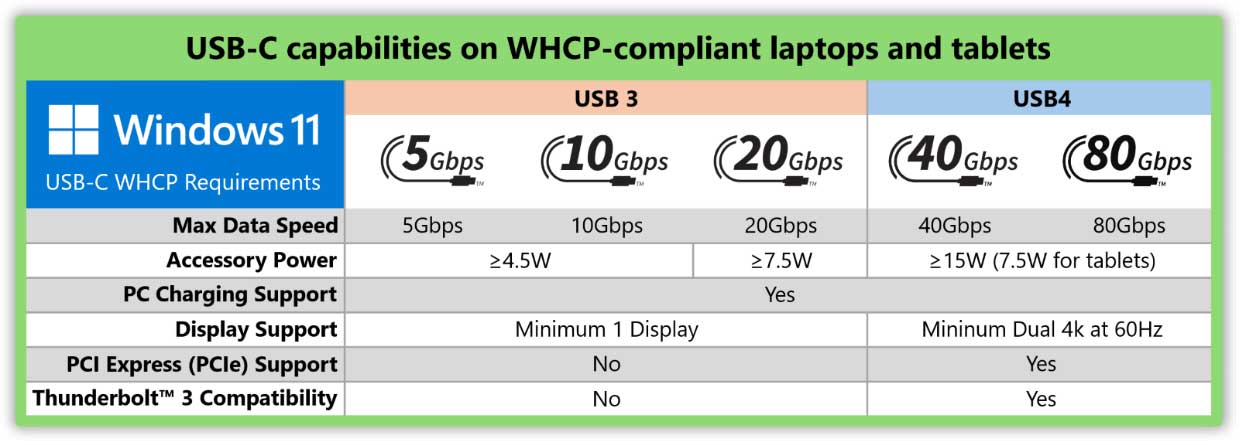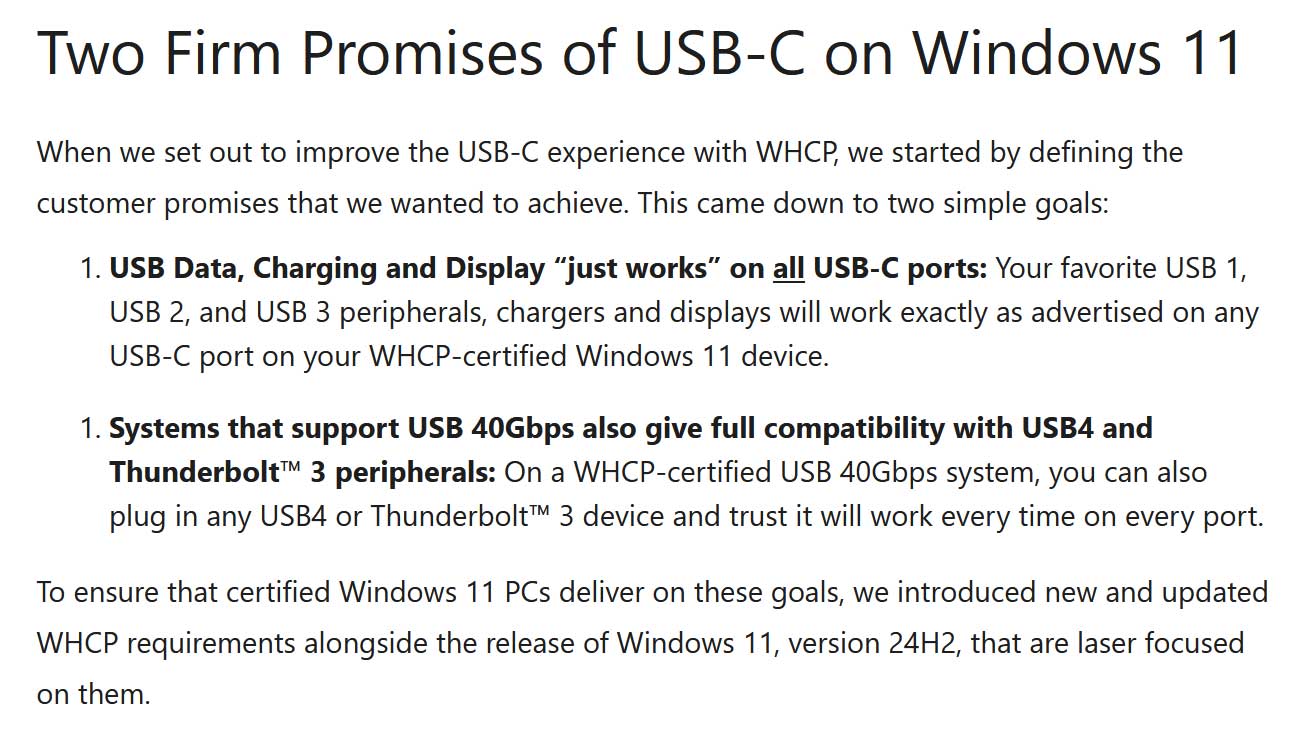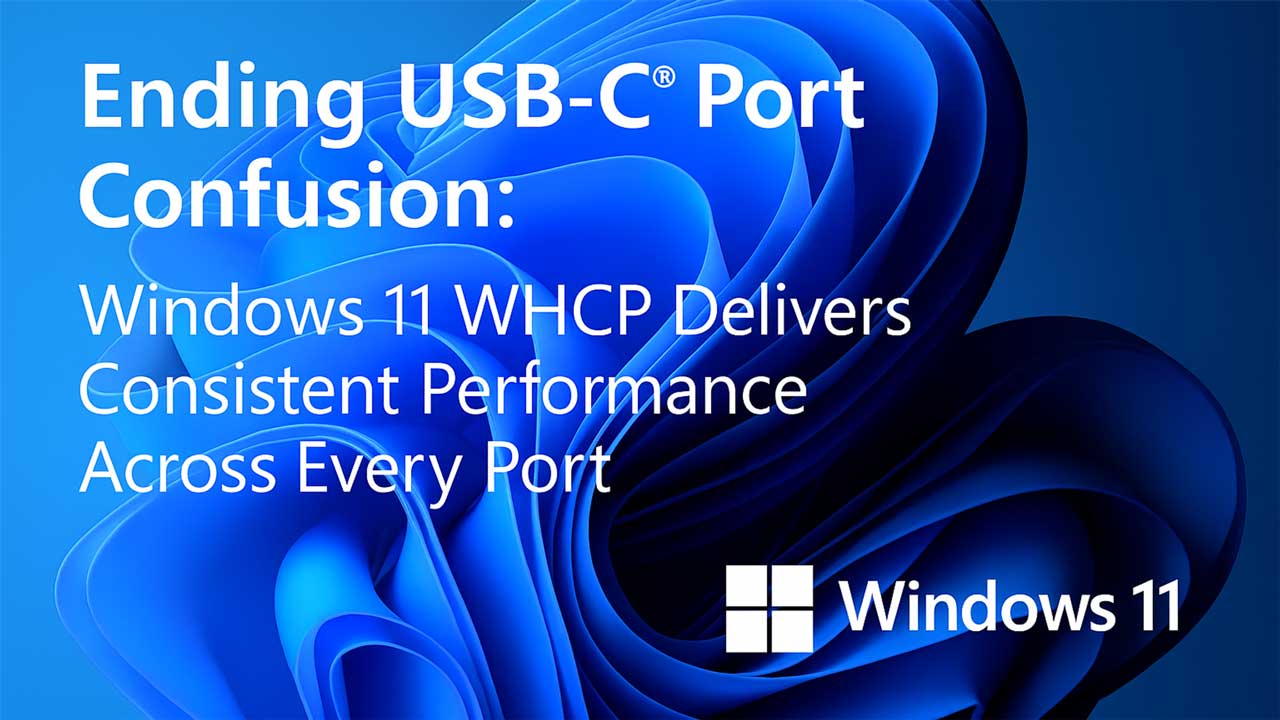Microsoft promises it is “ending USB-C port confusion” with its updated Windows 11 Windows Hardware Compatibility Program (WHCP) initiative. Going forward, it pledges to ensure all USB data, charging, and display functionality “just works” on all your USB-C ports. Moreover, an additional rule means USB 40Gbps ports will be fully compatible with both USB4 and Thunderbolt 3 peripherals. The Microsoft blog indicates that these rules should already be in place with certified Windows 11 laptops and tablets that come with Windows 11 24H2 installed.
Senior Product Manager at Microsoft, Ugan S., asks readers of his blog whether they are “Tired of USB-C ports that don’t behave consistently?” To illustrate the problem, he retells a story about ‘The Blank Display’ and laments that such issues still happen in the present day. It isn’t the USB-C port that’s the problem, says the Microsoft exec, it is “the inconsistent implementations of USB-C port capabilities across the PC ecosystem.” Or in other words, not all USB-C ports are created equal.
To fix this inconsistency, the WHCP will now mandate that every USB-C port on new Windows laptops and tablets needs to support data, charging, and display functionality. This should mean no more guessing about which ports support what, and might also mean end users are happier as they can connect a charger or second display to either side of a laptop (if there are USB-C ports both side).

Microsoft put the chart above together to show the capabilities of WHCP-compliant laptops. Yes, they all support the three core functions, but their levels of support will still vary. In addition to the familiar data speed differences, USB 3.X ports won’t provide as much accessory power, or support as many displays, as USB4.
On the topic of USB4, you can also see in the table that “On a WHCP-certified USB 40Gbps system, you can also plug in any USB4 or Thunderbolt 3 device and trust it will work every time on every port.”
Not mentioned yet, or hinted at in the table, Microsoft is also requiring USB-IF certified silicon in the PC. Moreover, a new Microsoft driver stack requirement means PCs are validated using Microsoft’s built-in USB controller drivers. This should ensure security and feature updates arrive via Windows Update.
To wrap up its post, Microsoft explains that the Hardware Lab Kit (HLK) is behind these improvements. The process is ongoing, with WHCP updating with every Windows release, delivering fixes and enhancements.
Follow Tom's Hardware on Google News to get our up-to-date news, analysis, and reviews in your feeds. Make sure to click the Follow button.
.png)






![What if you swam in a nuclear storage pool? [video]](https://www.youtube.com/img/desktop/supported_browsers/chrome.png)
